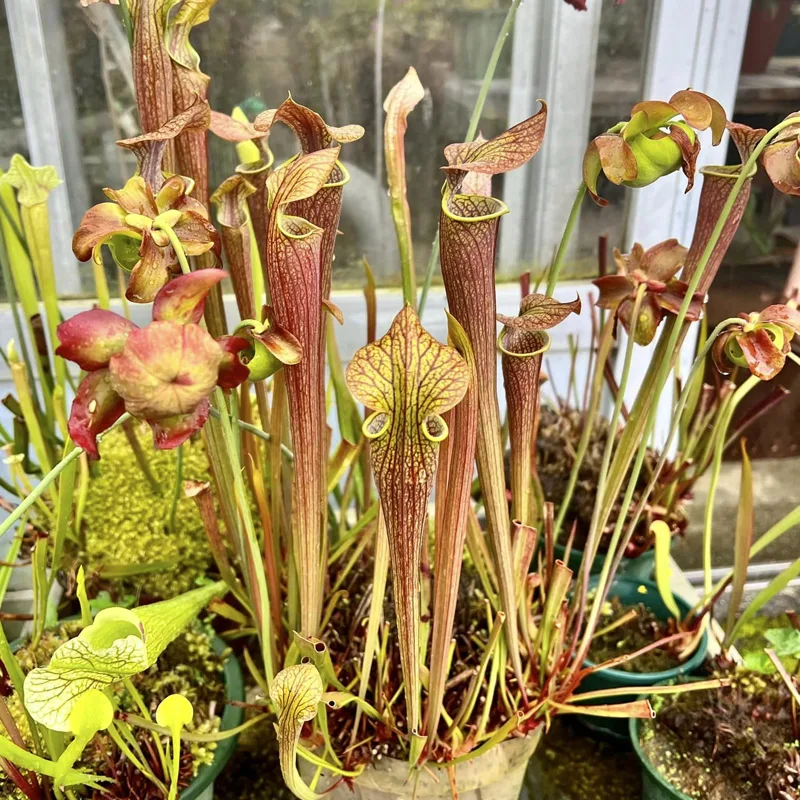
Ligularia fischeri: A Gardener’s Guide to the Fischer’s Leopard Plant
Hi there, Ferb Vu here! Today, we’re diving into the world of Ligularia fischeri, also known as Fischer’s ragwort or gomchwi. This impressive perennial is a powerhouse in the garden, offering stunning foliage and vibrant yellow blooms. Whether you’re a seasoned gardener or just starting, Ligularia fischeri can be a valuable addition to your landscape.
150 Species in Genus Ligularia
What is Ligularia fischeri?
Ligularia fischeri is a herbaceous perennial native to East Asia, particularly northeastern China, Mongolia, and Russia’s Far East. It belongs to the Asteraceae family, closely related to sunflowers and daisies. This vigorous plant boasts large, heart-shaped, light green leaves that can reach up to 16 inches across. The serrated edges and prominent veins add a touch of texture, making them a focal point even before the blooms arrive.
Come summer, Ligularia fischeri erupts in a dazzling display of bright yellow daisy-like flowers. These cheerful blooms rise on tall stalks, often reaching heights of 6 to 7 feet. The combination of bold foliage and sunny flowers creates a stunning visual impact in any garden.
Ligularia fischeri vs. Ligularia dentata: What’s the Difference?
Ligularia fischeri is often confused with its close cousin, Ligularia dentata, also known as the toothed Ligularia. Both are herbaceous perennials with impressive foliage and yellow flowers. However, there are some key differences to keep in mind:
- Leaf shape: Ligularia fischeri has heart-shaped leaves, while Ligularia dentata has more oval-shaped leaves with pronounced teeth along the edges, hence the name “toothed.”
- Plant size: Ligularia fischeri generally grows taller, reaching up to 7 feet compared to Ligularia dentata’s more compact 3-4 feet height.
- Flower color: Both species have yellow flowers, but Ligularia dentata’s blooms tend to have a deeper, richer yellow hue.
- Sun tolerance: Ligularia fischeri prefers partial shade, while Ligularia dentata can handle full sun conditions better.
Consider these factors when choosing the right Ligularia for your garden. If you have a shady spot that needs a bold statement plant, Ligularia fischeri is the way to go. If you have a sunny border and prefer a more compact option, Ligularia dentata might be a better fit.
How to plant and care for Ligularia fischeri?
Adding Ligularia fischeri to your garden is easy. Here’s what you need to know:
- Planting: Choose a location with moist, well-drained soil and partial shade. Afternoon shade is particularly beneficial in hot climates. Plant your Ligularia fischeri in spring or fall, spacing them 2-3 feet apart.
- Watering: Keep the soil consistently moist, especially during the first growing season and hot summer months. Water deeply at the base of the plant to encourage root development.
- Fertilizing: A light application of balanced fertilizer in early spring can promote healthy growth. However, Ligularia fischeri is not a heavy feeder and can thrive with minimal fertilizing in rich soil.
- Mulching: Apply a layer of mulch around the base of the plant to retain moisture, suppress weeds, and regulate soil temperature.
- Pruning: Deadhead spent flower stalks to encourage additional blooms and maintain a tidy appearance. You can also cut back the foliage in late fall or early spring before new growth emerges.
Ligularia fischeri: Beyond the Garden
Ligularia fischeri isn’t just a beautiful ornamental plant. In Korean cuisine, the young leaves, known as gomchwi, are a popular ingredient in various dishes. They are often enjoyed fresh as a wrap vegetable or pickled as kimchi or jangajji. Gomchwi is valued for its nutritional content, containing vitamin C, beta-carotene, and potential antioxidant and anti-cancer properties.
Important Note: While Ligularia fischeri leaves are considered safe for human consumption, some Ligularia species are known to be toxic to animals. Always research the specific variety before allowing pets to graze in your garden.
Conclusion: Ligularia fischeri – A Showstopper for Your Shade Garden
With its impressive foliage, vibrant blooms, and easy-care nature, Ligularia fischeri is a versatile plant that can add a touch of drama and elegance to any shade garden. Whether you’re looking for a statement piece, a backdrop for other shade-loving plants, or a culinary delight, Ligularia fischeri is sure to impress. So, why not give this fascinating perennial a try in your garden?
If i die, water my plants!



